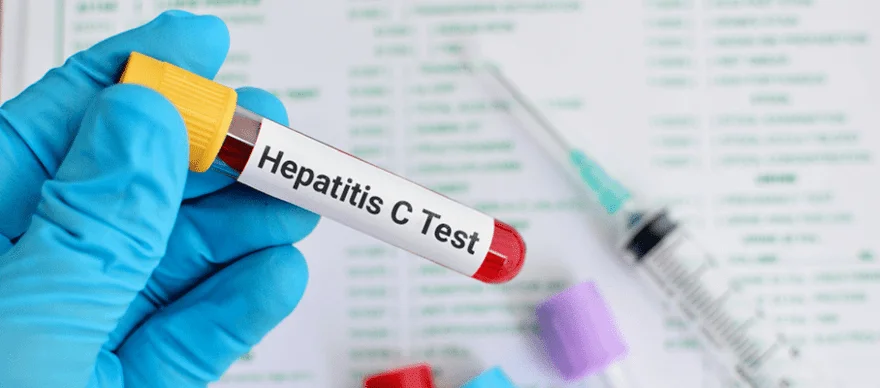Preventive Healthcare
Viral Fever: Symptoms, Causes, Diagnosis, Treatment, and Prevention
285409 Views
0

Viral fever, often known as febrile viral disease, is a widespread health risk that affects people of all ages. It is distinguished by a high body temperature and a variety of symptoms. Viral fevers are caused by several viruses and can range from mild to severe. This article will go through the numerous features of viral fever, such as its symptoms, causes, diagnosis, treatment, and preventative techniques.
Symptoms
Viral fever frequently manifests as a slew of symptoms that vary in severity. Typical symptoms include:
Fever: The characteristic of viral fever is an elevated body temperature. It can range from moderate to severe and is typically accompanied by chills and sweating.
Weakness and Fatigue: People suffering from viral fever frequently experience a significant sense of weakness and exhaustion, which might interfere with their everyday tasks.
Body Aches and Pain: Muscle and joint symptoms are prevalent during a viral fever. These aches can be generalised or specific to certain places.
Headache: Headaches are common and can range from moderate to severe, leading to overall discomfort.
Sore Throat and Cough: Many viral infections can cause a painful throat and a persistent cough.
Runny or Stuffy Nose: Nasal congestion, sneezing, and a runny nose are frequent symptoms, particularly in cases of respiratory infections.
Gastrointestinal Symptoms: Some viral fevers can induce gastrointestinal symptoms such as nausea, vomiting, and diarrhoea.
Causes
A multitude of viruses generate viral fevers, each with its own route of transmission. Some of the most frequent viruses that cause viral fevers are:
Influenza Virus: The influenza virus causes influenza, sometimes known as the flu, which is highly contagious and spreads by respiratory droplets.
Rhinovirus: Causes the common cold and is spread through direct contact with infected surfaces or humans.
Dengue Virus: Dengue fever, which is spread by mosquitos, can produce serious symptoms if not treated promptly.
Chikungunya Virus: Chikungunya fever, which is also spread by mosquitoes, causes joint discomfort and fever.
Ebola Virus: A uncommon but severe virus that causes hemorrhagic fever and is spread mostly through direct contact with bodily fluids.
Zika Virus:The Zika virus, which is largely carried by infected Aedes mosquitos, has attracted international interest due to its link to birth abnormalities and neurological illnesses.
West Nile Virus:The West Nile virus, which is transmitted to people by mosquito bites, can cause flu-like symptoms as well as neurological problems such as encephalitis and meningitis in severe cases.
Diagnosis
Diagnosing viral fever involves a combination of clinical evaluation and laboratory tests. A doctor will take into consideration the patient's symptoms, medical history, and physical examination. Depending on the suspected virus, tests may include blood tests, throat swabs, or respiratory samples. These tests help identify the causative virus and rule out other potential infections.
A concise diagnostic package designed to systematically assess the underlying factors contributing to fever. It comprises of essential tests including Complete Blood Count (CBC Haemogram), Erythrocyte Sedimentation Rate (ESR), Malaria Parasite Detection, Widal Test for Typhoid, and Routine Examination Urine.
A comprehensive diagnostic compilation aimed at unravelling the diverse underlying factors contributing to fever. This amalgamation of tests include Complete Blood Count (CBC Haemogram), Routine Examination Urine, Erythrocyte Sedimentation Rate (ESR), Malaria Parasite Detection, Serum Glutamic Pyruvic Transaminase (SGPT), Typhi Dot IgM, and Culture & Sensitivity for aerobic bacteria in a single blood bottle.
It is a streamlined, yet comprehensive diagnostic ensemble specifically designed to methodically explore the foundational causes of fever encompassing key assessments such as Complete Blood Count (CBC Haemogram), Dengue (NS1) antigen, Malaria Parasite Detection, Typhi Dot IgM, Routine Examination Urine, and Chikungunya-IgM.
This fever panel is tailored to meticulously uncover the multifaceted contributors to fever. It encompasses a spectrum of pivotal tests including Complete Blood Count (CBC Haemogram), Routine Examination Urine, C Reactive Protein (CRP), Malaria Parasite Detection, Serum Glutamic Pyruvic Transaminase (SGPT), Typhi Dot IgM, Culture & Sensitivity for aerobic bacteria in a single blood bottle, Dengue (NS1) antigen, Chikungunya-IgM, and Leptospira IgM.
Fever Profile Detection by Real-Time Multiplex PCR
This profile presents a cutting-edge diagnostic paradigm powered by state-of-the-art Real-Time Multiplex Polymerase Chain Reaction (PCR) technology, designed to efficiently unravel the intricate spectrum of fever-causing agents. This innovative profile integrates the simultaneous detection of diverse pathogens, encompassing Plasmodium species, Dengue virus, Salmonella species, Rickettsia species, Chikungunya virus, West Nile virus, Leptospira species, and Zika Virus.
Treatment
Because most viral illnesses do not react to antibiotics, which are effective against bacteria, supportive care is the primary treatment for viral fevers. The goal of treatment is to relieve symptoms and encourage recovery. The following are important therapeutic components:
Rest: Adequate rest is essential for the body to fight the infection and rebuild vigour.
Hydration: Staying hydrated aids in the maintenance of biological functioning as well as the management of fever-related fluid loss.
Fever Reducers: Over-the-counter drugs such as acetaminophen or ibuprofen can help lower temperature and pain.
Symptomatic Relief: Cough syrups, nasal decongestants, and throat lozenges provide temporary relief from specific symptoms.
Nutrition: A well-balanced, nutrient-dense diet aids the immune system's fight against infection.
Hospitalisation may be required in extreme cases, particularly for infections such as dengue or Ebola.
Prevention
Adopting a combination of personal hygiene practises and immunisation measures is required to prevent viral fever:
Hygiene: Handwashing with soap and water on a regular basis, avoiding direct contact with ill people, and covering your mouth and nose when sneezing or coughing can all help to lower the risk of viral transmission.
Vaccination: Vaccines for various viruses, including influenza, measles, and mumps, are available. Getting prescribed vaccines on time can provide protection against certain viral illnesses.
Mosquito Control: Use mosquito repellents, wear protective clothes, and eliminate stagnant water sources to prevent mosquito-borne viral diseases such as dengue and chikungunya.
Viral fever is a frequent medical condition that can cause minor discomfort to serious disease. To reduce the danger of infection, it is critical to recognise its signs, understand its causes, and take preventive actions. While therapy generally focuses on symptom management and recovery, prevention through good hygiene and immunisations remains the most effective way to battle viral fever and its consequences.













1701259759.webp)









 WhatsApp
WhatsApp